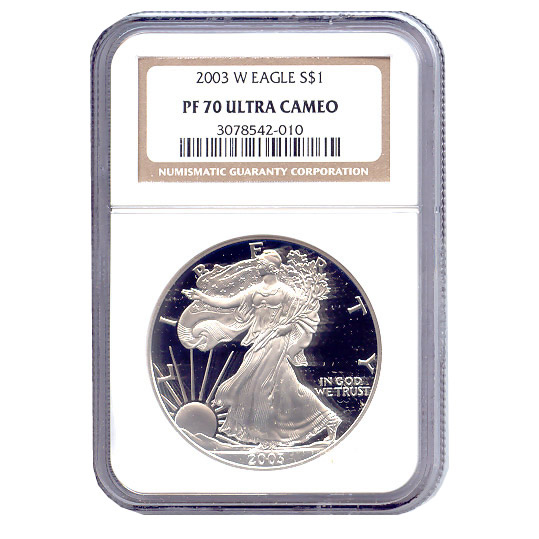When precious metal bullion coins are minted, they go through a particular process. Dies are created with inscriptions and artwork and at times, chemicals are used to create special finishes. Before these dies and the equipment could be used to mint multiples of each coin, practice runs were done to be sure everything worked properly. The coins that resulted in these practice runs were normally just as perfect and beautiful as their bullion superiors were. Mints began categorizing these coins as proofs, and they are an official extension of bullion coins.
The Proofing Process
Proof coins are now minted in greater numbers than the few originals created to check equipment. Numismatists collect these coins for their quality and stature and beauty. Proof coins are usually struck in dies that have been treated with certain chemicals to make areas of the design and artwork appear frosted. This gives the proof coins a dimensional surface. The die is first polished so that areas that are not treated with chemicals will have a mirror-like gleam, so brilliant, there seems to be a rainbow of light that reflects off each coin. Proof coins have sharper rims and more detailed artwork than regular circulated coins.
Modern day mints make use of the most advanced technology and additional finishes can be easily accomplished. Gilded roofs have gold overlays applied to certain areas of the artwork to define elements in the picture.

A Proof American Silver Eagle
Proof coins are “struck” twice, which does not cause imperfections, but forces the metal into all the crevices of the die providing a finished coin with much detail and fine characteristics. This amount of detail is not found on regularly minted coins. These specially minted proof coins are assigned special grade levels that include the letters PR. Coin certification and grading agencies assign these grades from PR70 and downward. A proof coin graded at PR70 is the highest grade possible and indicates an unblemished, exact proof. From PR69 and down indicated there is some aspect of the coin that may not be perfect.
Proof Prices
Because of the extra care and steps to prepare and mint a proof coin, respective government mints around the world sell them at higher prices than coinage meant for circulation and currency. Proof coins are often minted in limited numbers, making proof coins from certain years more difficult to find and therefore more valuable to collectors. United States Mint proof coins have the same purity of each precious metal in them unless they are from years ago, or a special edition of a coin was created.
The US Mint allowed private collectors to buy proof coins directly from their inventory beginning in 1836, and by 1850 proof coins could not be bought as a single coin, but in a proof set. In 1955, they once again offered proof coins in individual packaging in addition to the proof sets.
These proof sets provided today by the Mint are beautifully sealed in protective packaging and come in royal blue boxes with the US Mint seal embellished on them in raised gold. Proof coins and sets are offered directly from the US Mint until the allocated inventory is exhausted. Buying directly from the Mint can save premiums coin dealers will charge on top of the fees et by the Mint.
Proof coins are collectable and wonderful long term investments or for special gifts.

